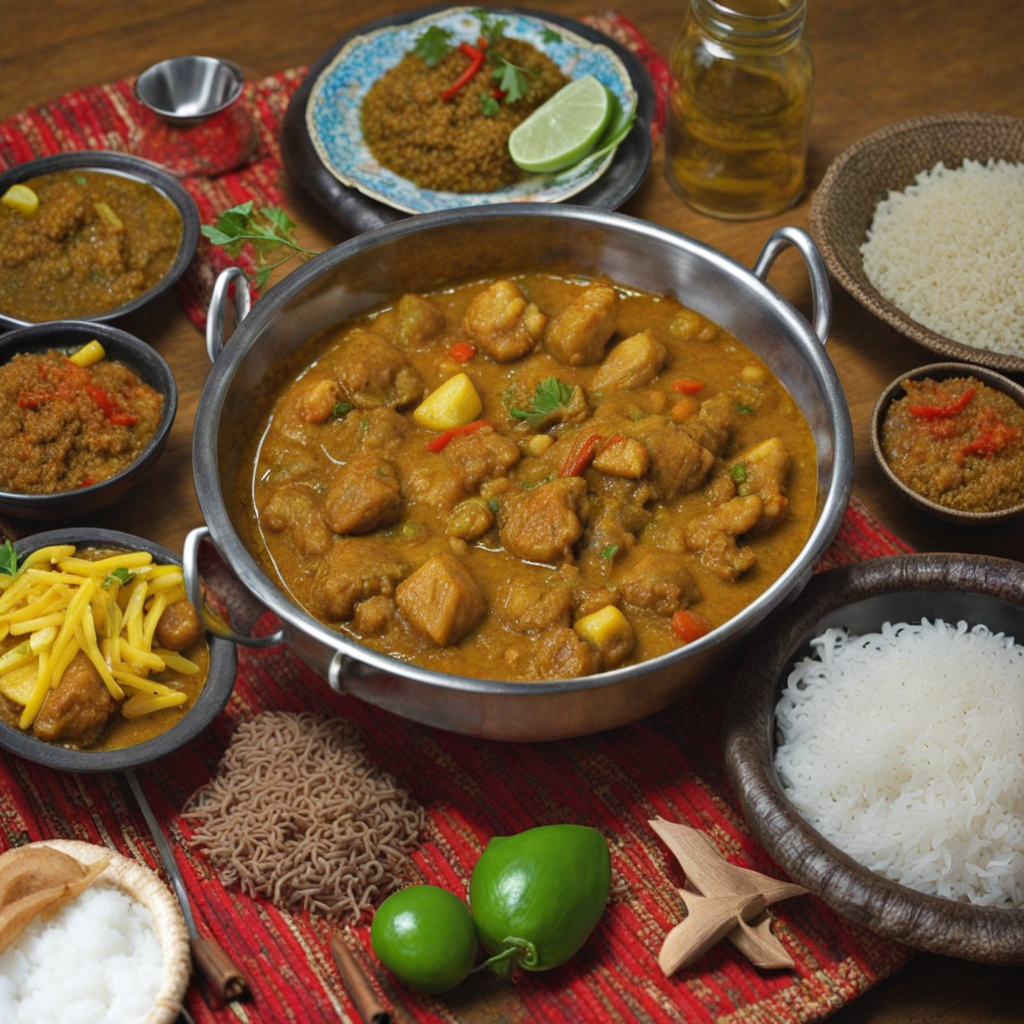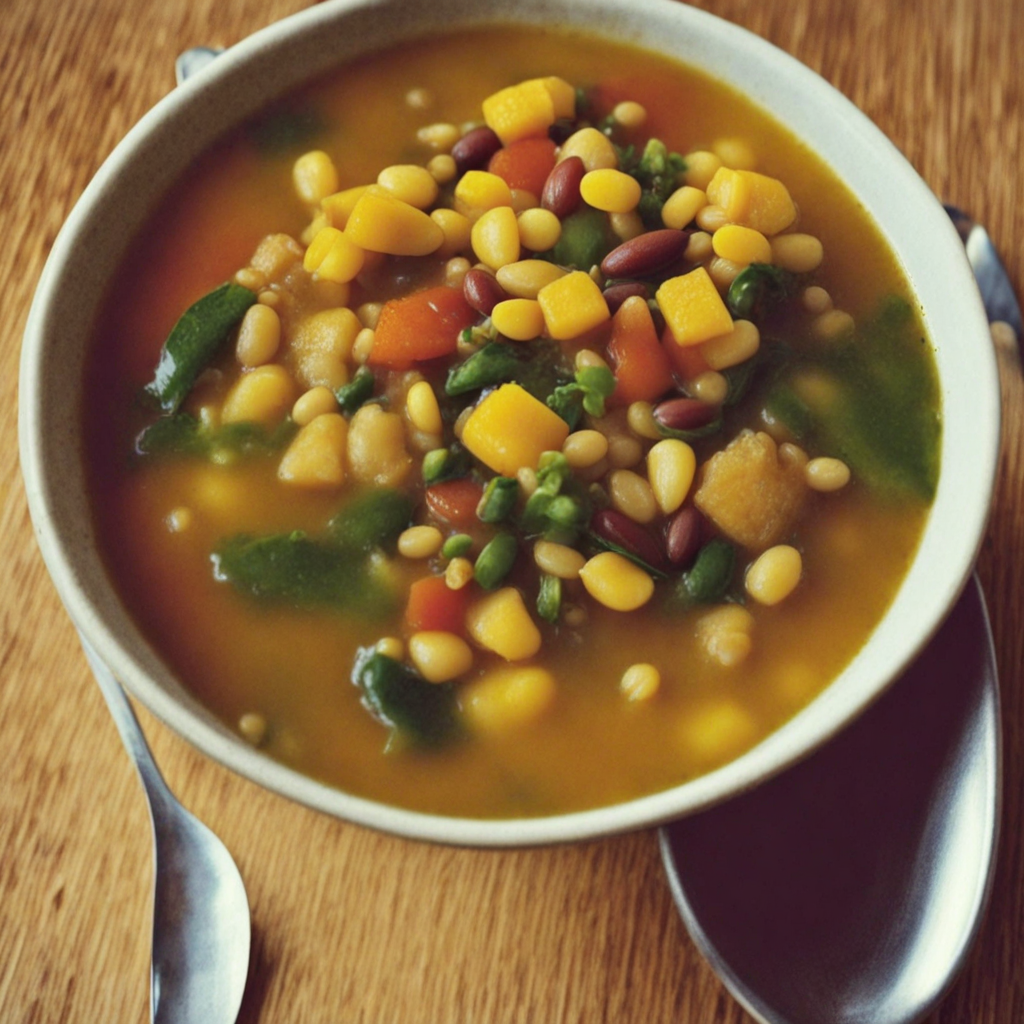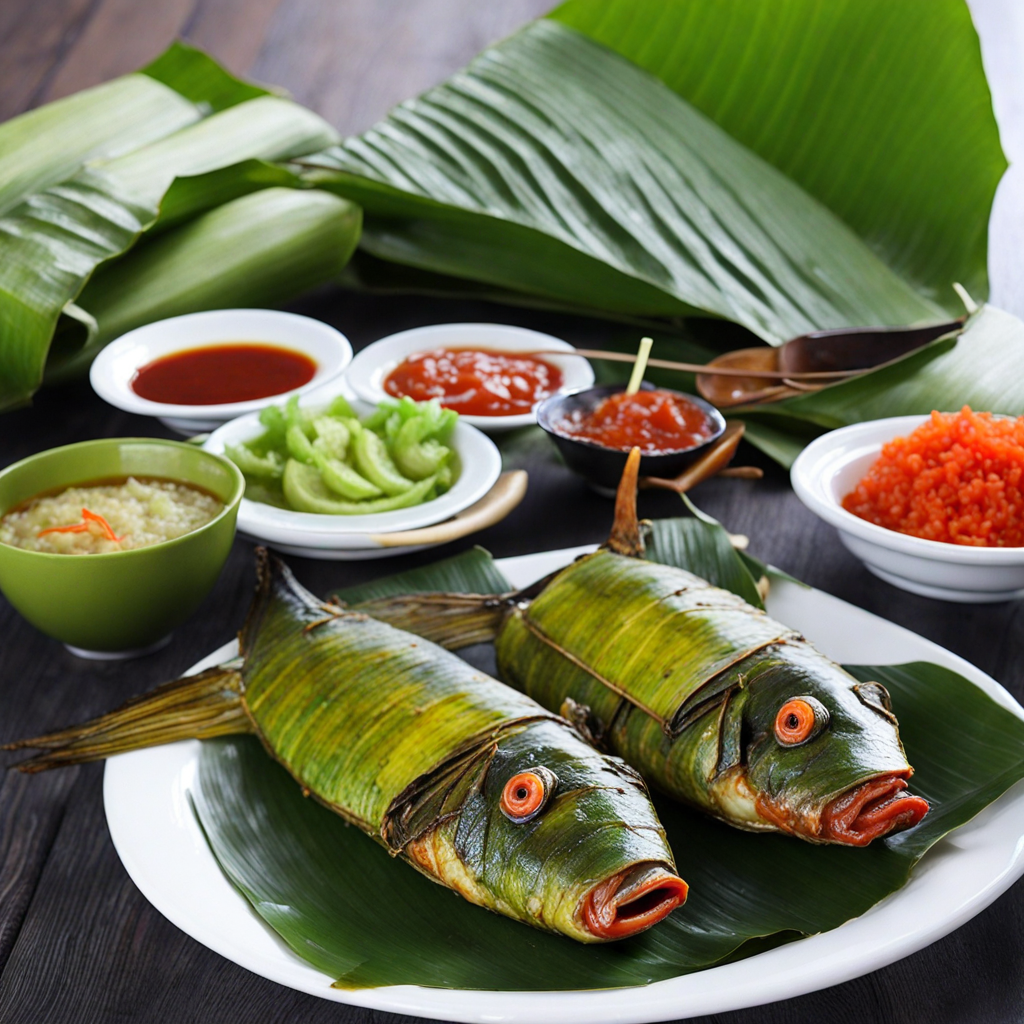Caril
Caril is a traditional dish from Timor-Leste that showcases the rich and vibrant flavors of the region. It is a type of curry that typically features a variety of meats, such as chicken, beef, or fish, simmered in a fragrant sauce made from a blend of local spices and herbs. The preparation of Caril usually involves marinating the meat in a mixture of garlic, ginger, turmeric, and coconut milk, which not only tenderizes the protein but also infuses it with a depth of flavor. The result is a harmonious balance of spicy, savory, and aromatic notes that tantalize the palate and leave a lasting impression. What sets Caril apart from other curries is its unique use of local ingredients, including fresh vegetables and sometimes even fruits like pineapple or mango, which add a delightful sweetness to the dish. The vibrant colors of the ingredients, from the bright yellow of the turmeric to the deep greens of the herbs, create an inviting visual appeal. Often served with steamed rice or traditional maize porridge, Caril is a comforting meal that encourages communal dining, bringing family and friends together to savor the dish's complex flavors. To truly appreciate Caril, it is essential to experience the way it is enjoyed in Timor-Leste. The dish is often accompanied by side dishes, such as sambal or pickled vegetables, which provide an exciting contrast to the richness of the curry. Whether enjoyed at a local eatery or prepared in the home kitchen, Caril is a culinary journey that transports you to the heart of Timorese culture, making it a must-try for anyone eager to explore new tastes and traditions.
How It Became This Dish
The Culinary Legacy of Caril in Timor-Leste Nestled in the heart of Southeast Asia, Timor-Leste, known as East Timor, is a nation steeped in a rich tapestry of history and cultural influences. Central to its culinary identity is a dish that holds a special place in the hearts and homes of its people: Caril. This flavorful dish, often characterized by its spicy, aromatic sauce, is more than just a meal; it is a symbol of resilience, cultural fusion, and communal spirit. #### Origins and Historical Context The origins of Caril can be traced back to the diverse cultural influences that have shaped Timor-Leste. The archipelago has been inhabited for thousands of years, with the Austronesian peoples being some of the earliest settlers. These indigenous groups brought with them agricultural practices and culinary traditions that laid the groundwork for the region’s food culture. The introduction of rice farming, which became a staple in Timorese diets, was pivotal to the development of dishes like Caril. The Portuguese colonization of Timor-Leste, which began in the 16th century, further enriched the culinary landscape. Portuguese settlers introduced new ingredients, cooking methods, and flavors, merging them with local traditions. The word "Caril" itself is derived from the Portuguese word "caril," which means curry. This connection highlights the fusion of indigenous Timorese flavors with Portuguese techniques and spices. The use of coconut milk, turmeric, chili, and other spices in Caril reflects this blend, creating a dish that is distinctly Timorese yet influenced by broader Southeast Asian culinary practices. #### Cultural Significance Caril holds a significant place in Timorese culture. It is commonly made with chicken, beef, or fish, simmered in a rich sauce that often includes coconut milk, chili peppers, garlic, and a variety of local spices. The dish is frequently served with rice, making it a hearty and satisfying meal. In Timor-Leste, food is an essential aspect of social life and community gatherings. Caril is often prepared for special occasions, family celebrations, and communal feasts. The act of cooking and sharing meals is a way to strengthen bonds within families and communities. During significant events such as weddings, religious ceremonies, and national holidays, Caril is a staple, symbolizing hospitality and the spirit of togetherness. Moreover, the preparation of Caril is a communal affair. Families often gather to cook together, passing down recipes and techniques from generation to generation. This practice reinforces cultural identity and fosters a sense of belonging among the people of Timor-Leste. The dish serves as a reminder of the shared history and collective experiences of the Timorese, encapsulating their struggles and triumphs. #### Evolution Over Time As Timor-Leste has navigated its complex history, including its struggle for independence from Indonesian rule in the late 20th century, Caril has continued to evolve. The resilience of the Timorese people is mirrored in their cuisine, which adapts to changing circumstances while retaining its core identity. In the years following independence in 2002, there has been a resurgence of interest in traditional Timorese cuisine, including Caril. Efforts to preserve and promote local culinary heritage have led to a renewed appreciation for indigenous ingredients and cooking methods. Farmers and chefs have begun to incorporate more locally sourced products, emphasizing sustainability and the importance of supporting local agriculture. Additionally, the globalization of food culture has introduced new influences and variations of Caril. Timorese chefs, both at home and abroad, have experimented with the dish, infusing it with contemporary techniques and flavors while respecting traditional recipes. This evolution reflects a broader trend in which traditional dishes are reimagined to appeal to modern palates, allowing Caril to remain relevant in an ever-changing culinary landscape. #### Ingredients and Preparation The heart of Caril lies in its ingredients. While the specific components may vary by region and household, the essence remains the same. The base typically includes a combination of protein (such as chicken, beef, or fish), root vegetables like potatoes, and a medley of spices. Fresh herbs, such as coriander and lemongrass, are often used to enhance the dish's aromatic qualities. The preparation of Caril involves several steps. First, the protein is marinated with spices and then sautéed until browned. Aromatics like onions and garlic are added, followed by the main spice mix, which often includes turmeric, chili powder, and sometimes ginger. Coconut milk is then incorporated, creating a rich and creamy sauce that envelops the ingredients. The dish is simmered until the flavors meld together, resulting in a savory, aromatic experience that tantalizes the taste buds. #### Modern Interpretations and Global Recognition In recent years, Caril has gained recognition beyond the borders of Timor-Leste. As interest in global cuisines continues to rise, chefs and food enthusiasts around the world have begun to explore the unique flavors of Timorese food. This exposure has led to a greater appreciation for Caril, showcasing its versatility and depth. Modern interpretations of Caril often incorporate fusion elements, blending traditional recipes with global influences. For instance, some chefs might introduce ingredients such as quinoa or different types of seafood to create contemporary versions of the dish. These adaptations offer new experiences while honoring the traditional roots of Caril. Moreover, culinary tourism in Timor-Leste has started to flourish, with travelers seeking authentic culinary experiences. Cooking classes and food tours often highlight Caril, allowing visitors to engage with local communities and learn about their food culture firsthand. This not only promotes the dish but also supports local economies and encourages sustainable practices. #### Conclusion Caril is more than just a dish; it is a testament to the rich history and vibrant culture of Timor-Leste. Its evolution from indigenous roots through colonial influences to modern interpretations reflects the resilience and adaptability of the Timorese people. As Caril continues to be enjoyed in homes and celebrated in communities, it remains a powerful symbol of identity, unity, and the enduring legacy of Timor-Leste’s culinary heritage. Through every bowl of Caril, the flavors of history, culture, and tradition are brought to life, inviting all who partake to savor the story of this remarkable nation.
You may like
Discover local flavors from Timor-leste







